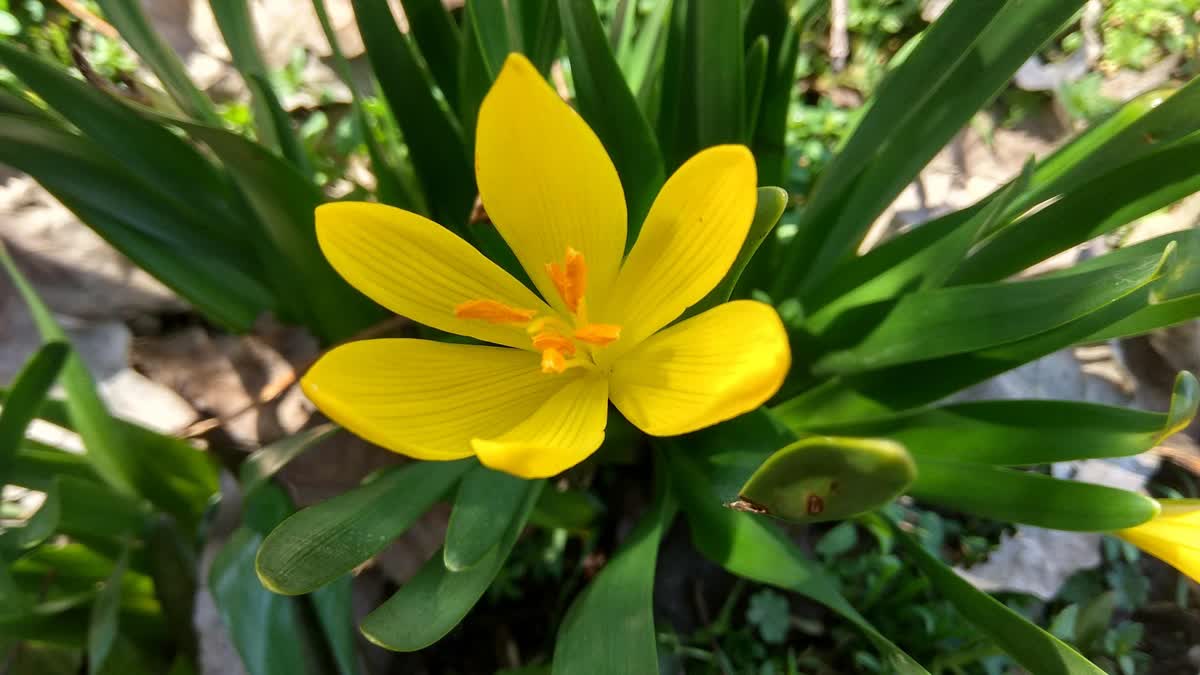Srinagar: In the fields of Kashmir, the vibrant yellow blooms of gul-e-toor (Sternbergia vernalisa) and the Virekum (colchicum luteum) herald the arrival of spring. By tradition and herbarium records, these flowers wait until February to open their petals. But this year they are blooming prematurely under an unusually clear blue sky in January.
“This is a very grave situation,” says Kashmir University’s botanist Akhtar H Malik. “These are spring flowers but we are witnessing the rise in temperature in winters resulting in shifts in bulbous flowering plants. It will impact our biodiversity.”
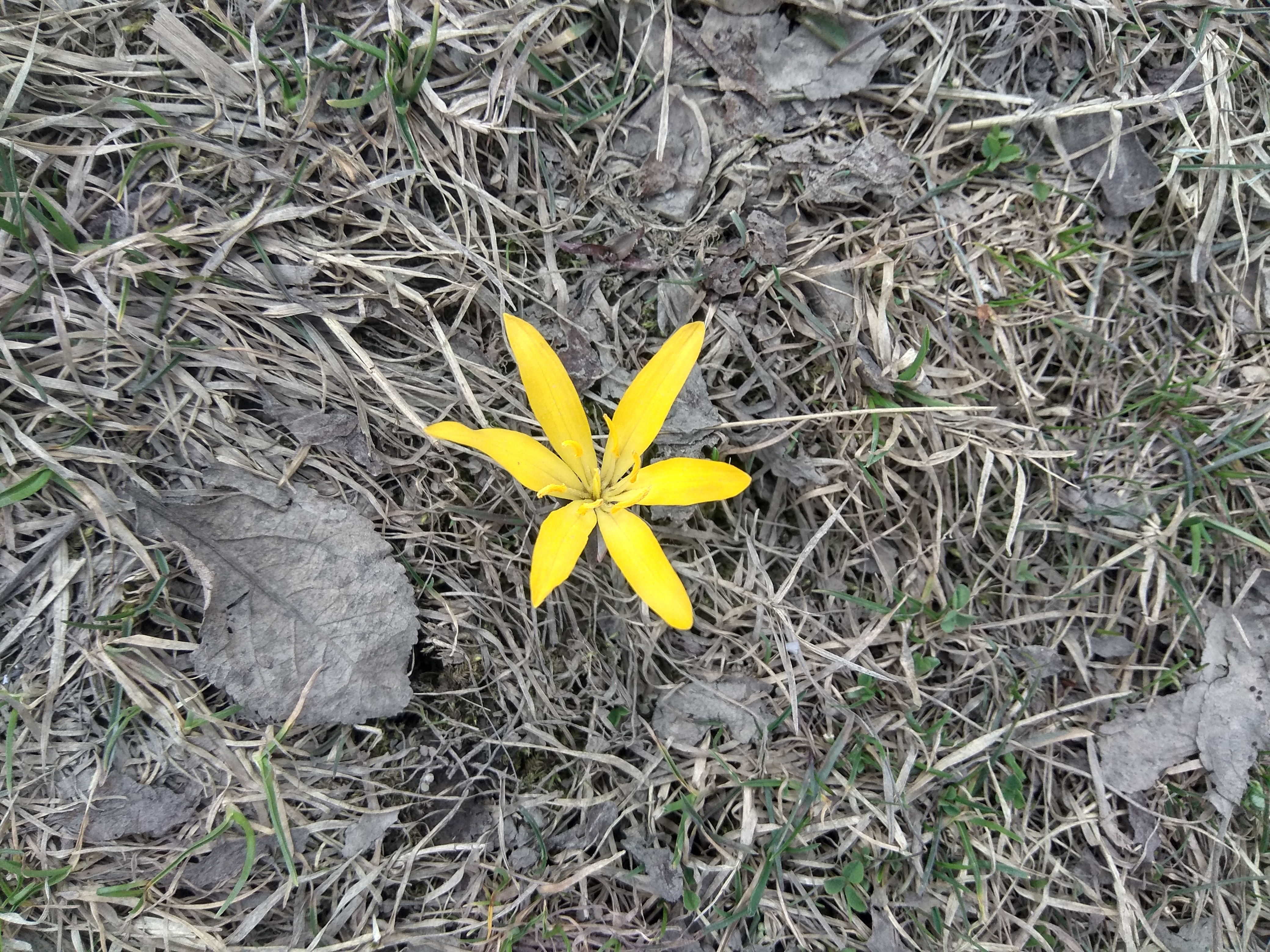
The signs are not limited to flowers. Kashmir’s peak winter comprising the two months of December-January should have brought snow, rain and biting cold. But the harshest winter period locally known as 'Chillai Kalan' has been marked by prolonged dryness and temperatures far above normal averages this year. The Indian Meteorological Department (IMD) Centre in Srinagar data recorded a maximum temperature of 15 degrees in mid-January, almost 8 degrees above the normal.
The lack of precipitation has been stark. Contrastingly, the data show that the Valley has received only 25-30 percent of rains and snow and temperature has felt more like early spring, with daytime temperatures staying in double digits.
In-charge Director Meteorological Centre Srinagar, Mukhtar Ahmad sees the prolonged dry spell behind the rise in day temperature in Chillai Kalan. The coldest 40-day period, which begins on December 21, has seen a significant rise in daytime temperatures, disrupting the region’s natural cycle.
“The rise in temperature is due to dryness and clear sky,” Mukhtar said adding “It has a negative impact and will rapidly melt snow on mountains. Besides, it results in premature blooming.”
The region, according to the Meteorological Centre’s forecast, is expected to experience a wet spell by January-end.
But drop in temperature ushered by wet spells is more worrying for plants, says Malik, who oversees Kashmir University herbarium housing 60,000 plant specimens.
Once the temperature dips, it poses a serious threat to blooming petals and hence drastically affecting pollination by 70 percent.
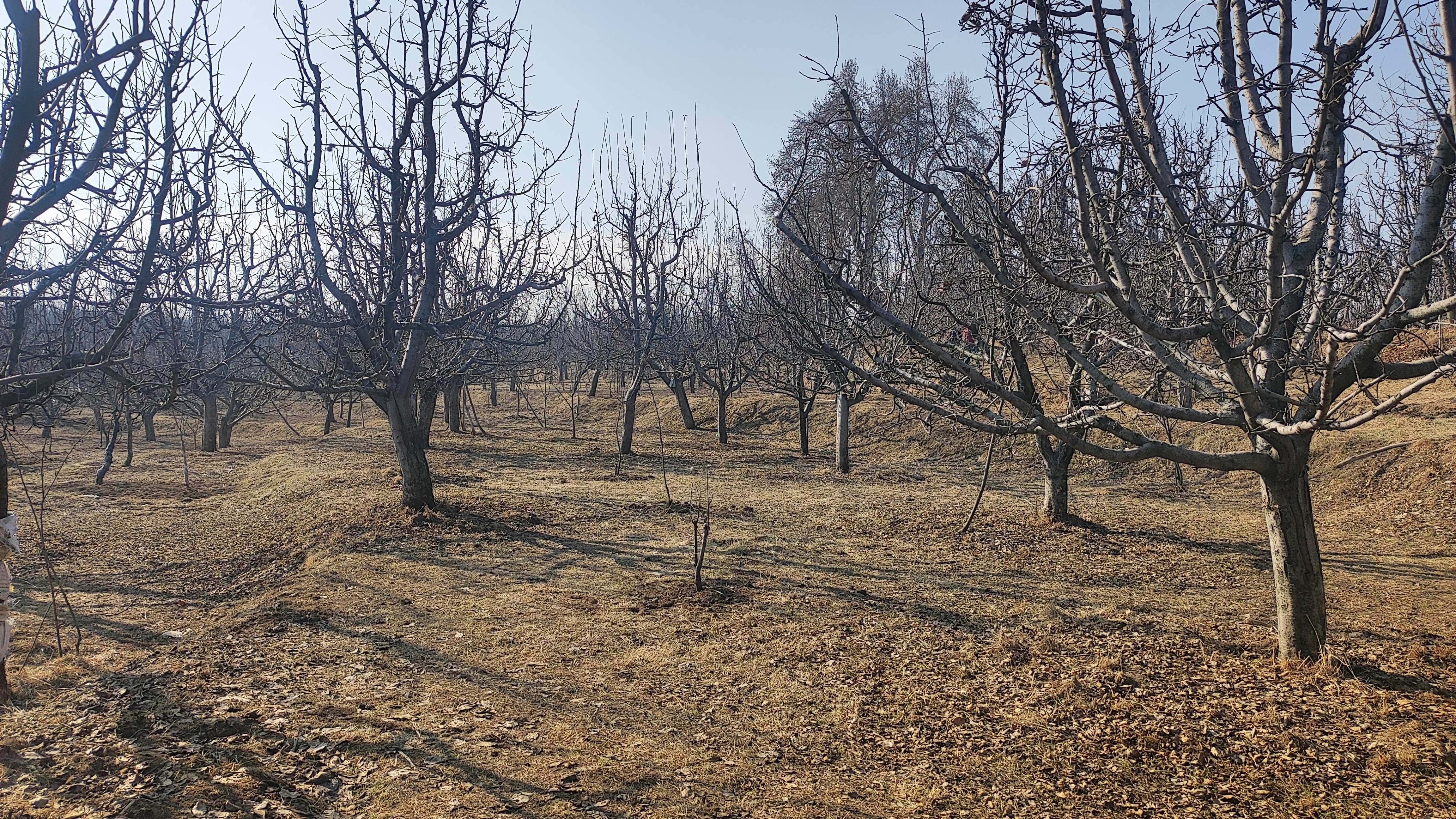
“It will not only affect flowers but fruits like apricot, cherry and plum which bloom with the arrival of spring. The cold will wilt the petals and we will be left with poor yields,” Malik adds.
The Jammu and Kashmir Himalayas host some of the largest glaciers in the Hindu Kush region. The Kolahoi glacier is the biggest in Kashmir and is the main source of water for the river Jhelum. But a study has shown that the Kolahoi glacier, Kashmir’s largest, has lost 23% of its area since 1962, threatening the Jhelum River, a key water source for agriculture.
Over 70 percent of the region’s livelihood depends on farming, which relies heavily on snowmelt for irrigation. Therefore, the recession of glaciers due to prolonged dryness translates into a direct impact on the socio-economic sector, says a senior climate scientist.
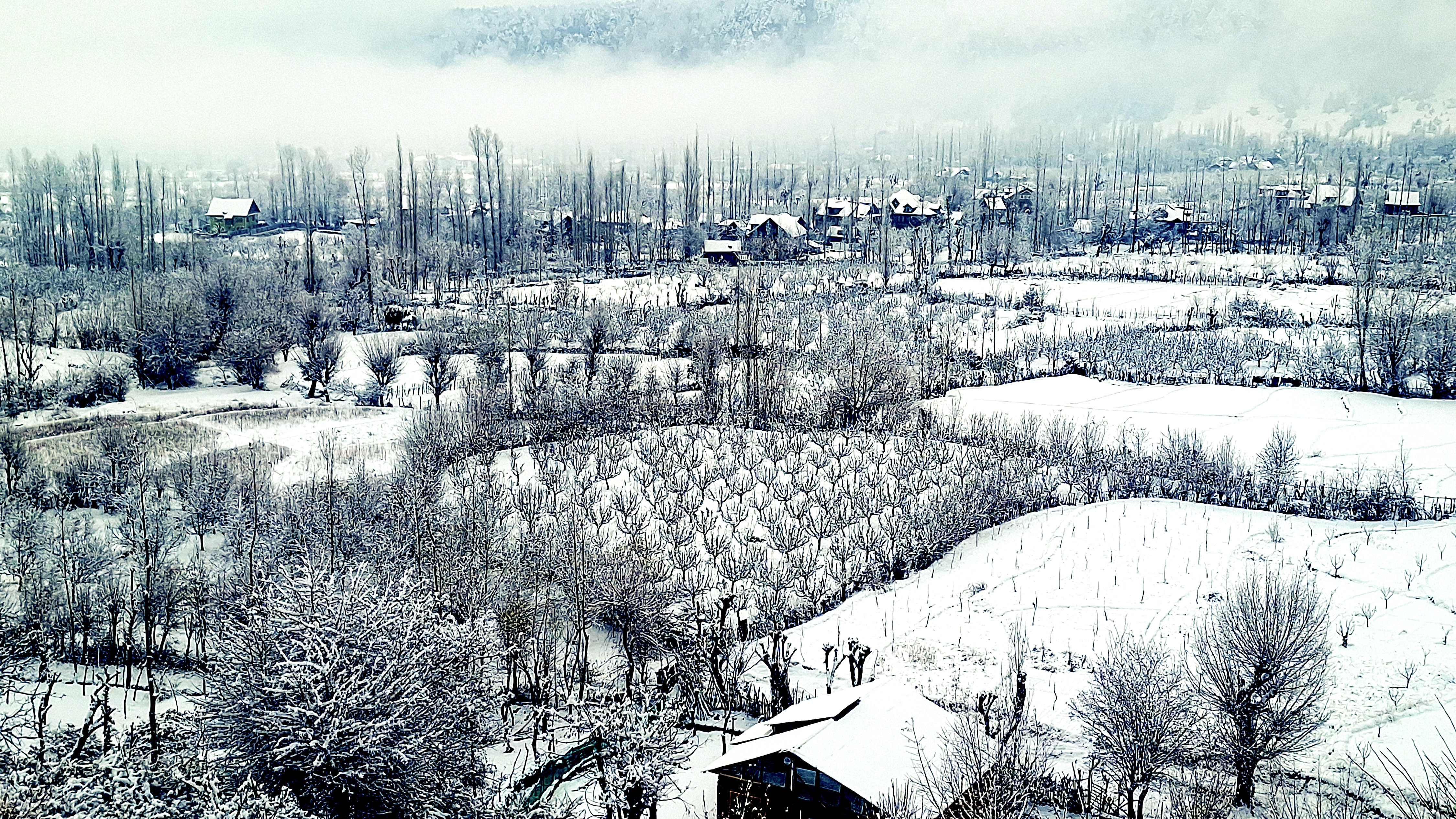
“The snow that western Himalaya used to receive during Chillai Kalaan is important for regulating glacier health and also for groundwater recharge,” he said. “In the prevalent depleted snow scenario, the upcoming summer heat would exacerbate glacier mass loss (glacier melt) since glacier surfaces, which otherwise used to remain masked with snow until May, will be exposed to heat much earlier, if the dry spell prevails. This might also affect hydropower production in the region.”
As climate change continues to impact the region, there has been a noticeable shift from traditional agriculture to horticulture, which requires less irrigation. A study ‘Linking the Recent Glacier Retreat and Depleting and Streamflow Patterns with Land System Changes in Kashmir Himalaya, India’ carried out by Geoinformatics Department of Kashmir University along with Department of Environmental Science at Nichols College, Dudley USA in 2020 said that the area under irrigation-intensive agriculture has shrunk by 39 percent while orchards have expanded by 177 percent from 1980 to 2017.
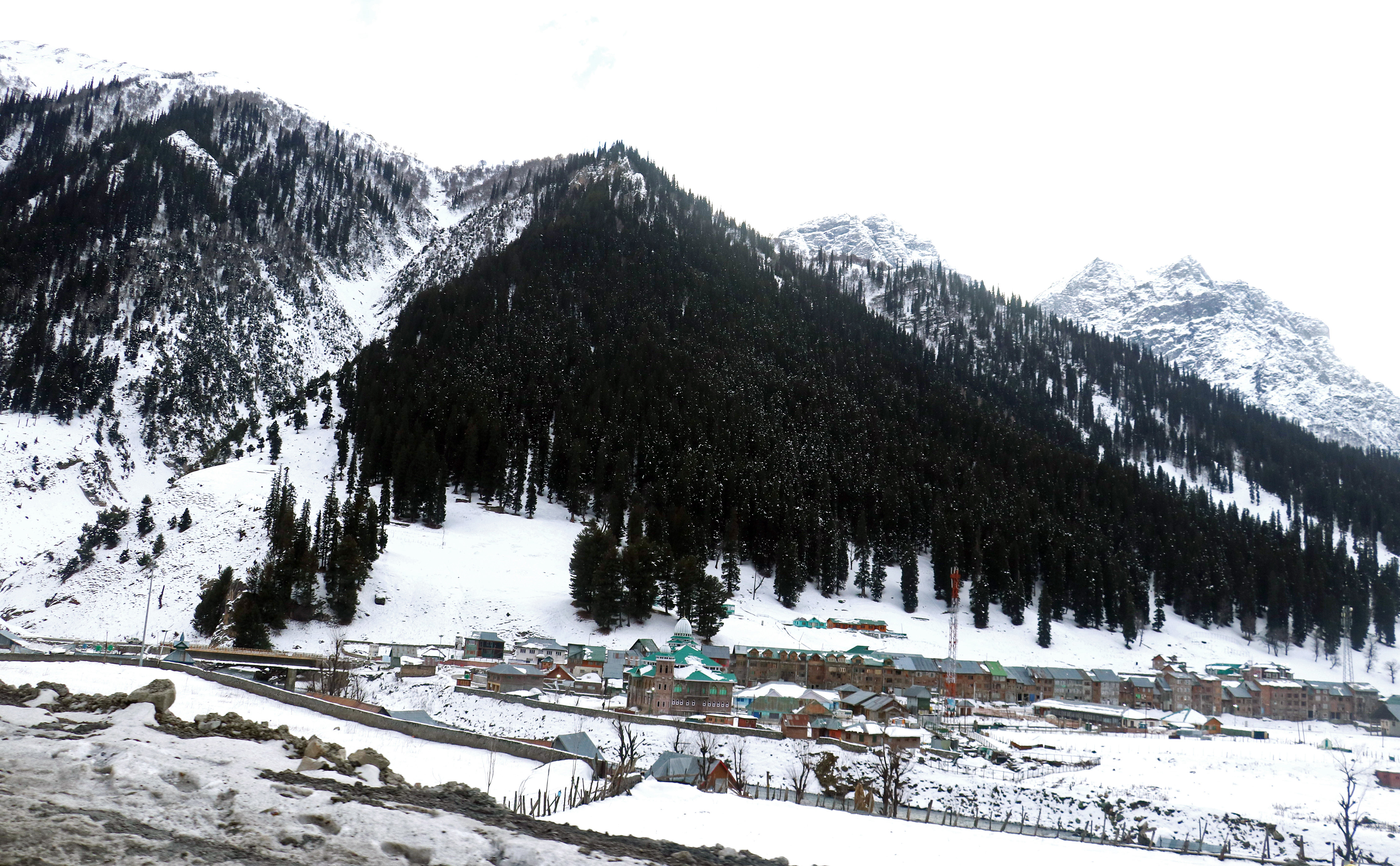
This shift reflects the region’s adaptation to changing climate conditions but also highlights the challenges of depleting water resources. The horticulture sector is a cornerstone of Jammu and Kashmir’s economy, contributing Rs 10,000-12,000 crore annually with over seven lakh families accounting for 35 lakh population directly or indirectly linked with it. With more than eight crore fruit-bearing trees spread across 2.15 lakh hectares, the region produces over 24 lakh metric tonnes of fruit annually. However, the rising temperatures and premature blooming threaten this vital industry.
In south Kashmir’s Shopian, known for high quality apples, farmers like Mushtaq Ahmad Malik are worried about the impact on quality and quantity . “This dryness will result in significant losses,” he says who has over 150 kanals of orchards. “ “Our apples are known for colour, size and juice. But this weather will hit us hard. We are praying to God to be kind to us. Else, nothing can save us.”
Read more:
